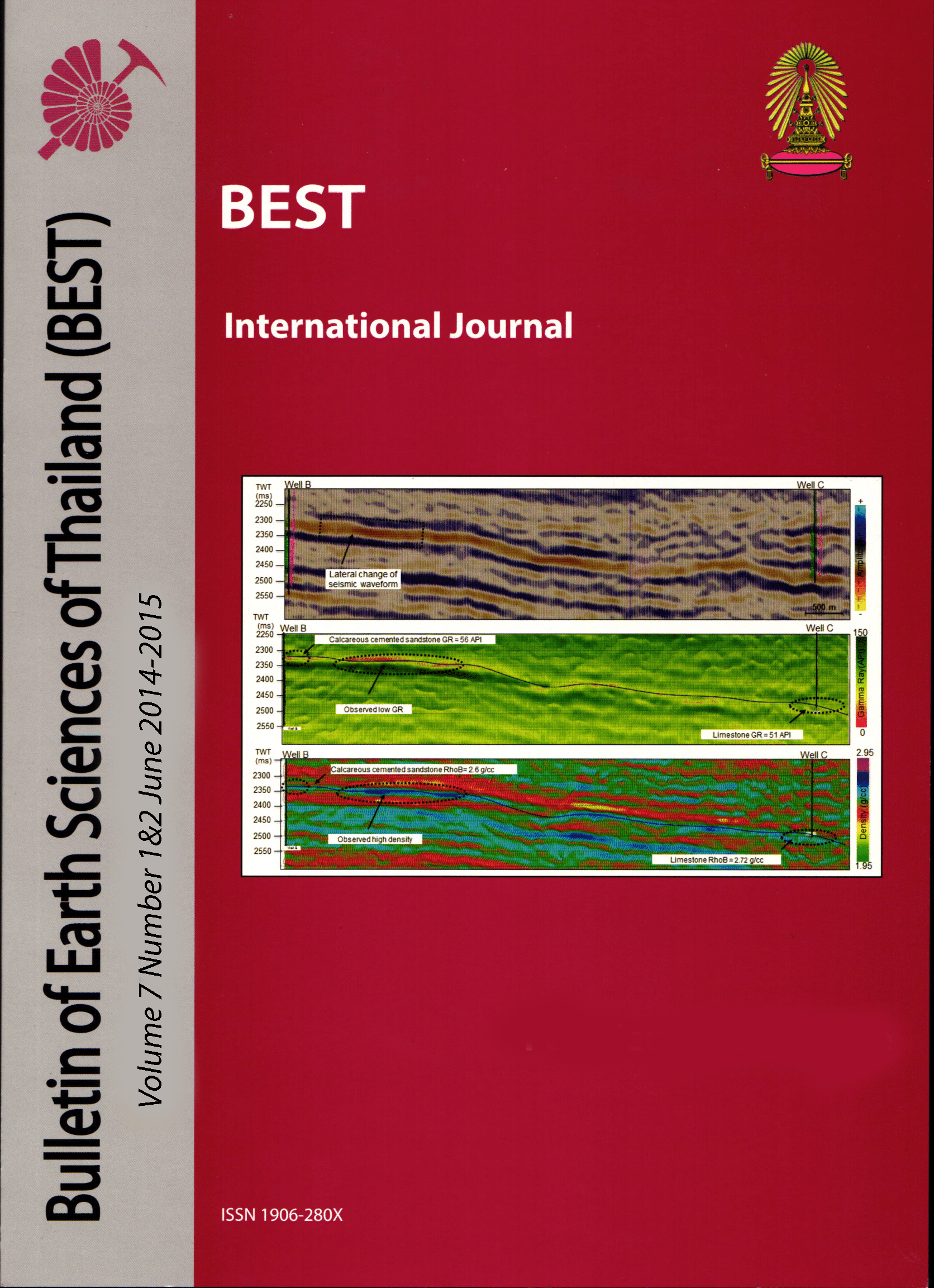Sequence stratigraphy and seismic facies mapping of the syn-rift to post-rift transition in offshore Vietnam
Main Article Content
Abstract
The geological history of Southeast offshore Vietnam was closely related to the East Sea spreading process and could be divided into 3 main stages: pre-rift (Paleocene - Eocene), synrift (Oligocene and Middle Miocene) and post-rift (Upper Miocene to present). After the second rifting phase, this area was uplifted and eroded followed by a thermal subsidence which has created new accommodation space until present day.
This study focused on evaluating the sediment deposition based on sequence stratigraphic concepts for the transition time from syn-rift to post-rift phase. Seven sequences were defined based on characteristics of seismic facies and well log analysis. Sequence boundaries which are unconformity surfaces were interpreted by different evidence resulting from erosion activities. Within each sequence, seismic facies were characterized in accordance with the variation of lithology from wireline logs. The system tracts are able to be defined and then combined with the biostratigraphy data in order to predict the changes of depositional environment. From the Southwest to the Northeast of the study area, sediment supply decreases due to the farther distance from sediment source. The shelf break migration through time is from the west to the east of the study area. The depositional environment has shallowing upward trends from the lower to the upper part (from basin to outer-middle neritic) and deepening trend from the Southwest to the Northeast (from shelf to bathyal). Among them very good potential reservoirs were formed in syn-rift carbonates, basin floor fan/turbidite deposits in deep marine environment.
Article Details

This work is licensed under a Creative Commons Attribution-NonCommercial-NoDerivatives 4.0 International License.
Copyright © 2008 Department of Geology, Faculty of Science, Chulalongkorn University. Parts of an article can be photocopied or reproduced without prior written permission from the author(s), but due acknowledgments should be stated or cited accordingly.
References
Caili Lu, Shiguo Wu, Yongjian Yao, Craig S. Fulthorpe, 2013, Development and controlling factors of Miocene carbonate platform in the Nam Con Son basin, southwestern South China Sea: Marine and Petroleum Geology 45 (2013), p. 55-68.
Henry W. Posamentier and George P. Allen, 1999, Siliciclastic sequence stratigraphy - concepts and applications; Oklahoma, USA; Society for Sedimentary Geology.
Kirby G. A.,& D. J. Evans, 1995, Seismic sequence stratigraphy: Theory and application, volume 1 – A workshop training manual; Nottingham, United Kingdom; British Geological Survey.
Nguyen Giao, Nguyen Trong Tin, 2007, The petroleum geology and resources of Vietnam: Hanoi, Vietnam, The Science and Technology Publisher; First edition; Chapter 10, p. 317-361.
Ngo Thuong San, Le Van Truong, Cu Minh Hoang, Tran Van Tri, 2007, The petroleum geology and resources of Vietnam; Hanoi, Vietnam, The Science and Technology Publisher; First edition; Chapter 4: Tectonics of Vietnam within the structural framework of Southeast Asia, p. 69-112.
Paul Veeken and Bruno Van Moerkerken, 2013, Seismic stratigraphy and depositional facies models: EAGE and Elsevier Scientific Publishers, Chapter 3: Seismic stratigraphic techniques, p.107-213.
Van Wagoner, J. C., 1995, Sequence stratigraphy and marine to non-marine facies architecture of foreland basin strata, Book Cliffs, Utah, U.S.A., in J. C. Van Wagoner and G. T. Bertram, eds., Sequence stratigraphy of foreland basin deposits: outcrop and subsurface examples from the Cretaceous of North America: AAPG Memoir 64, p. 137–223.
VPI-Labs, 2012, The report of high resolution biostratigraphy of the well A
VPI-Labs, 1996, The biostratigraphical report of the well B
VPI-Labs, 1994, The biostratigraphical report of the well C


